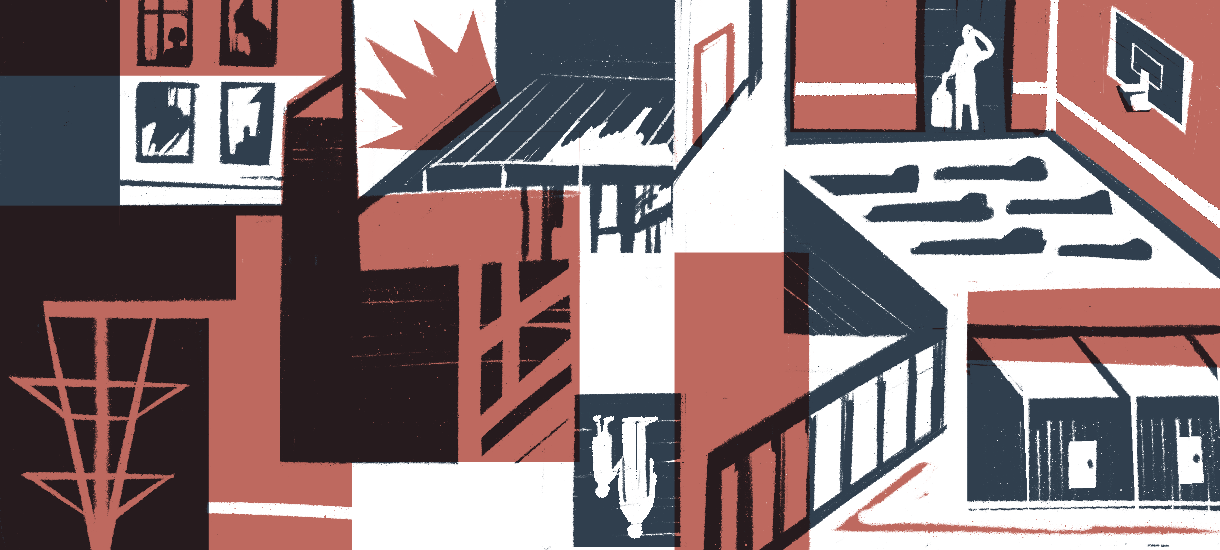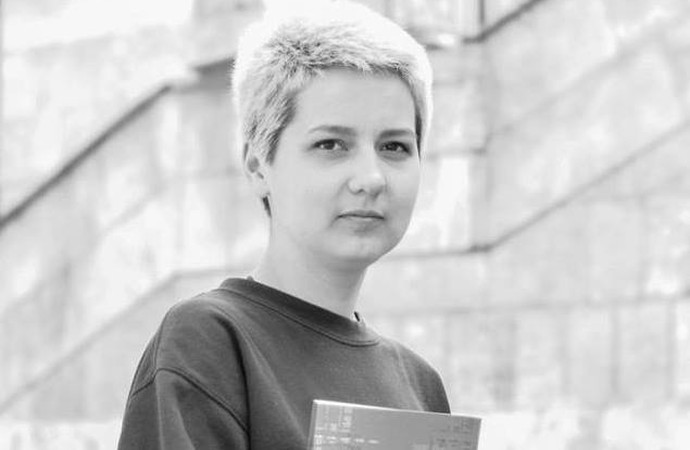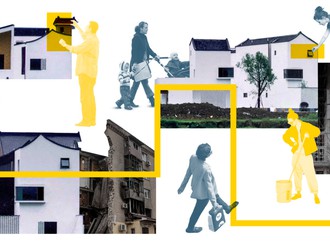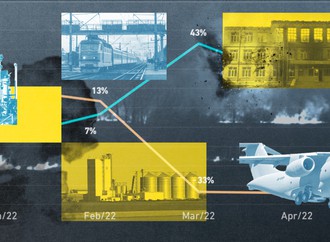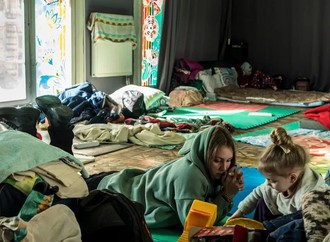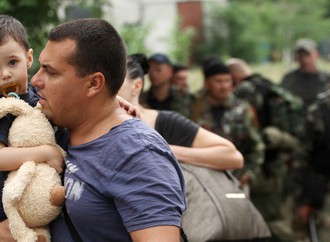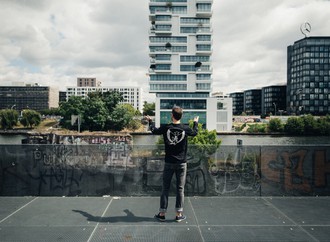Full-scale Russian invasion of Ukraine caused an unprecedented housing crisis. More than hundred thousand homes were destroyed or damaged, millions of Ukrainians had to flee their homes. Housing policy did not manage to address the housing needs of internally displaced people. At the same time the crisis encouraged creation of new non-profit forms of tenancy organized by civil society and municipal urban administrations. Still the situation is critical and requires a careful rethinking of goals and mechanisms of housing policy.
New housing crisis
Since the 24th of February millions of Ukrainians have lost their homes. However for each particular family or individual the situation is particular - for example, some were able to come back to their home in Kyiv after the region was liberated, some can not escape Mariupol’ and their home is destroyed. In order to sketch the direction of the future housing policies one needs to analyze this variety of situations. In this paper I offer the following classification - displacement caused by the dangers of war, displacement caused by destruction of homes, and displacement caused by the rent market itself.
Majority of displaced people left their homes escaping danger to their life and health, occupational regime, humanitarian crisis. As on the 26th of August 2022 the UN Refugee Agency According estimates 6,865,625 refugees from Ukraine recorded across Europe and 6,645,000 estimated number of IDPs in Ukraine. Majority of IDPs and refugees still have their homes and some are already coming back or planning to come back when the situation is safer, while some are willing to stay in the places they moved.
At the same time there are people whose homes are destroyed or damaged. They are in a much more unstable situation, as their chances to get decent housing in the short run are way lower. According to Olena Shuliak, Deputy Head of the Committee of the Verkhovna Rada, 15 million square meters of housing were destroyed by Russia’s army and nearly 800.000 Ukrainians have lost their homes due to the war. Mostly affected are the Oblasts Donetsk, Kharkiv, Kyiv and Chernihiv. 220.000 people have already submitted for compensations for destroyed housing. These people need to be temporarily housed while their homes are being rebuilt or repaired. Also it is very probable that a significant part of them are displaced and might not be willing to come back to the place they used to live.
There is another type of housing issue which gets way less attention - tenants displaced due to the boom of the rent market in the Western regions of Ukraine. Transparency International article states that between October 2021 and May 2022 the rents in Lviv region increased by 96%, in Uzhgorod region by 225%, in Ivano-Frankivsk by 128%. By now this boom has slightly calmed down, however rent remains unaffordable not only for IDPs, but also for ‘locals’. In order to rent the flats to IDPs ready to pay double prices many were evicted and ended up on highly speculative rent markets. As the rent market is predominantly informal there is no source of data to even generally estimate the number of such evictions.
This paper aims to show what kind of housing policy could address such a broad and unstable variety of housing needs Ukrainians are facing now and will be facing in the following years. But first there is a need to outline what kind of housing policy endorsed the housing crisis.
Housing policy before and during the war
Since the 1990s when the housing market developed in Ukraine the housing policy aimed at homeownership as the main way of providing housing. The key mechanisms were the following: mass privatization of housing in 1990s, support of the mortgage market in 2000s, support of private developers, especially in the land-use policy, state subsidies to the population for buying housing, ignoring of the policies of public housing, absence of efficient rent market regulation.
With the annexation of Crimea and the war starting in 2014 in the Donbas, around a million and a half of Ukrainians fled the occupied territories and territories along the front line. Finding housing became for them one of the key issues. The housing policies of providing housing for the internally displaced people aimed at assisting every IDP to get his or her own private flat. Such programs resulted in providing only several hundreds of private flats a year. As a result, in 2020, after 6 years of war, approximately 70% of IDPs did not solve their housing issue. The goal of providing each family a privately owned home could not be reached even if more state funds were channeled to the programs for housing IDPs aimed at homeownership. At the same time social housing was provided on an extremely low level, the rent market was not regulated, leaving IDPs on their own on the rent market where they were often excluded not just due to economic factors, but also due to prejudice against people from Donbas.
The experience repeats during the last month of full-scale invasion, but the level of catastrophe is way higher. During the first month since the 24th of February the state managed to provide temporary housing for IDPs to a certain level. Predominantly the student dormitories are being used as temporary housing, apart from it there are some temporary settlements. Such options are neither comfortable, nor long-term, and they need to be replaced with more sustainable housing. What is being offered as a long-term housing solution are state subsidies for IDPs for buying housing through low rate mortgages. Such programs are that inefficient that they do not influence the situation in any way. For example, since the full-scale invasion the main state housing institutions “State Fund for Support of Youth Housing Construction” bought 52 flats for IDPs. While such an approach does not meet the actual needs of people, what could address those needs is being ignored. There are no attempts to regulate the rent market, stop evictions or provide any kind of non-profit housing from the national government.
How IDPs survived?
The massive displacement which occurred since 24th February made millions of Ukrainians to look for new housing. During March and April of 2022 together with a group of colleagues I collected interviews with non-combatants: people who left their homes and arrived to Western Ukraine and with locals who experienced the influx of IDPs. This data reveals various ways in which people managed to house themselves and shows the networks of civil society and local government which reacted to the crisis. It also points to the problems of the housing policy in Ukraine.
The first practice was provision of temporary housing. Temporary shelters were organized in municipal facilities such as schools and sporthalls. Due to COVID-19 pandemic the educational spaces were not in use, and became the public resource mobilized for temporary stay. The same process occurred in the private and civil sectors - offices of companies and NGOs, and cultural spaces were turned into shelters. This process was predominantly self-organized, however very much depended on infrastructural resources available before the housing crisis started. Municipalities managed to provide the infrastructure, however the management of the receiving people was done by volunteers. Part of the temporary housing became long-term and does not provide a decent level of comfort and privacy.
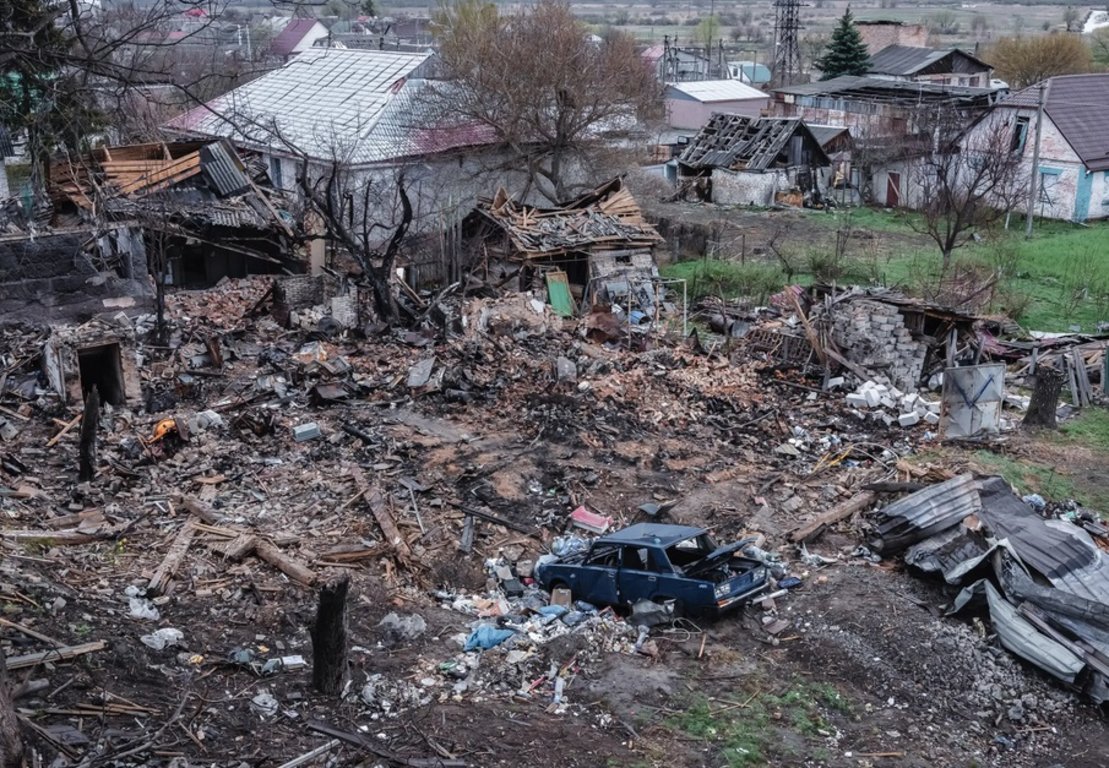
Borodyanka, April 17, 2022. Photo: Pavlo Bishko, ‘Zaborona’
The reason for this is the exclusion which occurred on the rent market. From the very first days of the full-scale war the rent prices in the Western regions of Ukraine skyrocketed. This excluded not only IDPs, but also caused the evictions of locals. Still such a situation was not with all the rented flats, the rise of the prices depended on the decision of the landlords, many of whom decided to keep the pre-war prices. This also became a form of solidarity. However the key problem revealed by this process is absence of regulation of the rent market. The housing policies of the state ignored the rent market as a sector of economy and this did not change with the war. Also the practical absence of social housing programs contributed to the housing crisis caused by the Russian invasion. Probably the only exception from such an approach are fragmented decisions of regional, urban or university authorities to use the available housing as non-profit housing. In some places the student dormitories are being used as social housing, in some (e.g. Vinnytsia) the municipal institutions are created to negotiate between the IDPs and landlords, this limits the speculations, evictions and discrimination on the rent market. Such policies are being invented as crisis measures, however carry in themself potential to become base for socially-oriented housing policy. However the chances to scale up such practices are very low, as the state housing policy was and still is oriented in a different direction - towards subsidizing the homeownership. The state programs for IDPs and people whose homes are destroyed are intended to invest both in the supply and the demand side of the housing development. Such an approach, apart from being completely ineffective, supports the developers, not the citizens.
Contemporary housing policy in Ukraine does not address the housing needs of people, which with the war became more diversified. It offers only one scenario of homeownership, which will not cover the majority of needs and for those who will get the state support it will take extremely long time, during which people will need to opt for temporary and for some expensive rent.
In order to solve the housing crisis caused by war in the following years the support of homeownership needs to be reoriented towards regulation of the rent market and provision of social housing. What are the possibilities for such trends in the process of ‘Rebuilding Ukraine’?

Borodyanka, April 17, 2022. Photo: Pavlo Bishko, ‘Zaborona’
Plans of the Ukrainian state and international partners on ‘Rebuilding Ukraine’
As a response to the massive ruining of housing and infrastructure the so-called ‘Rebuilding Ukraine’ plan is being designed by the government. This process does not concern housing alone, however housing is the crucial need not only after the war, but already now while the war continues. There are several aspects of these policies which will define if it will meet the housing needs of Ukrainians.
On the international level the financing mechanism of the ‘Rebuilding’ will affect not only the housing sector but the structure of the Ukrainian economy for the following years or even decades. At the moment Ukraine expects inflow of liquidity from international financial institutions, such as IMF, from the partner states, and from the reparations of confiscated in Western Russian activities. Such aid is being planned in the form of grants and credits. While Ukrainian foreign debt is not being restructured, the credits will deepen the financial dependence of the Ukrainian economy. This will harden the possibility to invest in non-profit housing.
On the national level the internal distribution of the aid is a crucial factor for the housing sector. As was discussed above, the existing approach supports homeownership and ignores non-profit housing. In the conditions of the housing crisis there is a need to diversify the forms of tenancy, not only due to the inability of the majority of the displaced people to buy, but also due to the uncertainty of their situations.
What kind of housing policy should be before and after the war?
Housing or any other kind of social policy should сome from people's needs. But starting with the war these needs became highly diversified. Big part of Ukraininians had to flee, but for some this displacement is temporary, for some long-term, for some it will become permanent residency. For somebody there is nowhere to come back. But for those who didn't have to flee from the danger of the war, they might be evicted because of the “boom” of the rent market. People's housing trajetories depend not only from the development of war, but also from the posibilities of employment, old and new social contacts, feeling of oneself in one or another settlement. That's why the more flexible in terms of offers housing sector should be developed. Right now the majority of housing offered to IDPs is temporary housing, for example student dormitories, from which IDPs will be evicted starting from the new academic year, or module housing. And though this kind of solution is good as temporary one, there is a big threat, that it will become long-term, and people for years will be stuck in unacceptable living conditions.
The answer to such a complicated complex of problems could be the development of an affordable rent market. It is possible through the private market regulation and the creation of non-profit sector of the rent market.
Even though the regulation of the rent market was happening long before modern times, this kind of policy becomes widespread during the WWI, when the military, the refugees and a lot of other social groups were in a great need of social support. Following the example of France, most of the European countries, their colonies, Russian Empire, but also New-York and Washington, DC from 1914 till 1920 put the moratorium on the rent prices, freeing a number of groups from the rent payment and prohibiting the evictions.
Similar processes, though even more widely, are happening in Europe during and after WWII. This type of policy helped a lot of poor citizens, refugees, familities of the military not to end up on the streets or under the shellings, to survive, get on their feet after their losses. After the half of the year of the full-scale invasion the attempts of several officials to regulate the rent market in Ukrainian cities did not give any significant result, because of the lack of support from the national government, especially from the MinRegion, responsible for the housing policy. IDPs still live in the temporary uncomfortable shelters or they come back to the cities, which everyday suffer from shellings.
Control of the rent market became for a lot of European countries only the beginning for the social housing policy. The afterwar reconstruction after the WWII adopts the social housing policy, which till this day serves as the social сushion for a lot of Europeans, and at this moment for a lot of Ukrainian refugees. The development of the non-profit sector of rent can already right now not only rise the affordability of housing, but also provide at least part of the population, that needs housing the most, with housing way faster than the queue for rebuilding and compensation of the housing by the state, proposed by the government. It could happen through the organisation and financing of the construction of housing by municipality or state companies as much as through the obligation of the private developers to give part of the living spaces to the collective ownership.
Another form of non-profit housing are cooperatives. This form of ownership is oriented towards the people who have at least a small amount of savings, so it can not be the only answer to the needs of Ukrainians. But, as I stressed before, the need to diversify forms of ownership and types of housing, according to the different kinds of needs, is urgent.
Russian aggression caused the unseen lows of the housing crisis, though the pressure from the part of the activists of housing initiatives is just strengthening. Great amount of grass-root organisation concerning the creation of affordable housing are emerging and growing. They ask for regulation of rent market, social and cooperative housing. For example, housing activists from Lviv demand the concession of vacant buildings for the use as dormitories for IDPs. The collective of IDPs starting from the beginning of war is building cooperative housing. This type of initiatives are networking, share their experience, involve on their side the local government, make domands to the national government. Housing becomes political.
In such an apocalyptic times Ukrainian society has a chance to fight and obtain the right for high quality housing, as well as the transport and social infrastructure. For those who have suffered the most from the war now, and for those who will live in the peaceful country. The conditions in which Ukrainians are going to live for decades depend on the voices for affordable and quality housing that have to be included in the process of rebuilding.
While the housing issue for IDPs is the most burning issue at the moment, people who were not displaced also often are in precarious housing situations. The actual housing crisis is a chance to reform the housing sector developing the housing system which addresses the needs of the population and takes into account environment, not the interest developers. In order to do this the housing policy has to be redirected from supporting the developers to supporting the variety of groups which have various needs.
